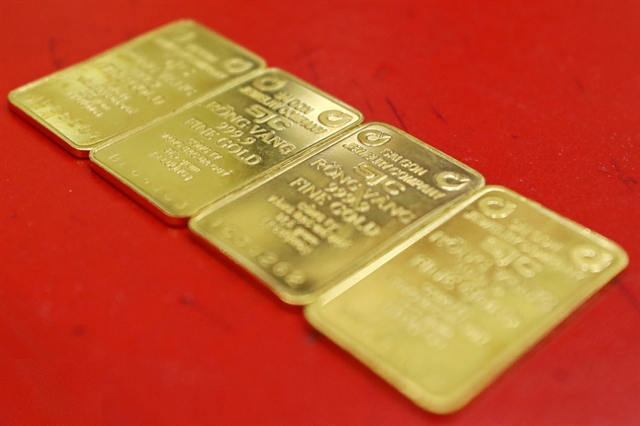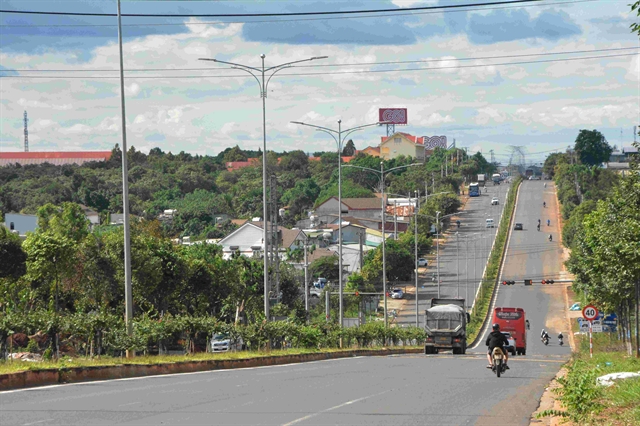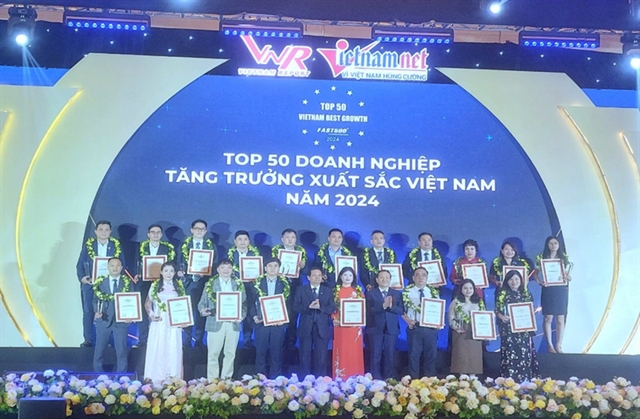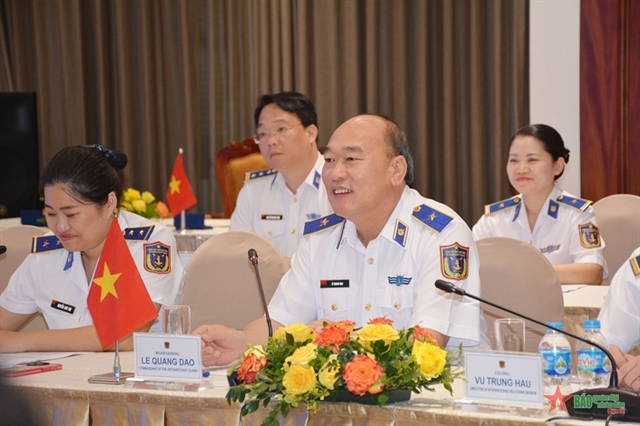 Economy
Economy

Provinces in the Cửu Long (Mekong) Delta, the country's largest shrimp producer, are increasing their shrimp output this year and focusing on developing sustainable shrimp farming models that bring high profits.
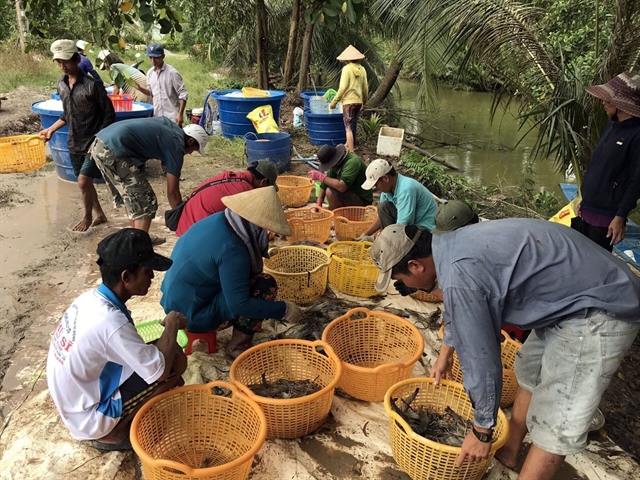
|
| Farmers harvest giant river prawns in Kiên Giang Province’s U Minh Thượng District. — VNA/VNS Photo Lê Sen |
HCM CITY — Provinces in the Cửu Long (Mekong) Delta, the country's largest shrimp producer, are increasing their shrimp output this year and focusing on developing sustainable shrimp farming models that bring high profits.
Farmers and companies in the delta are breeding shrimp under several farming models that have proven to be successful, including industrial farming, intensive farming, super-intensive farming, extensive farming, shrimp – rice farming, and shrimp – forest farming.
Many farming areas have met the Vietnamese Good Agricultural Practices (VietGAP) and Global Good Agricultural Practices (GlobalGAP) standards, Best Aquaculture Practices (BAP) and Global Aquaculture Stewardship Council (ASC).
To meet shrimp output targets this year, the provinces have set up farming schedules for shrimp crops in each area and instructed farmers to strictly follow the schedules.
Farmers in Kiên Giang Province, for example, have received instructions on shrimp – rice farming in U Minh Thượng District, black tiger shrimp breeding along the Cái Lớn River and in coastal areas, and industrial and semi-industrial shrimp farming.
Kiên Giang is working with other provinces to inspect the quality of shrimp fry bought into Kiên Giang for breeding, according to its Department of Agriculture and Rural Development.
Farmers must design their shrimp ponds properly to cope with harsh weather conditions like prolonged heat and drought.
The province’s Department of Agriculture and Rural Development aims to farm 120,000ha of shrimp with an annual output of 85,000 tonnes this year, up about 3,000 tonnes against last year.
Sóc Trăng Province plans to breed more than 50,000ha of shrimp with an annual output of 167,000 tonnes this year, up more than 17,000 tonnes against last year, according to the province’s Department of Agriculture and Rural Development.
Last year, most provinces in the delta, which includes 12 provinces and Cần Thơ City, had good shrimp harvests and high profits.
Sóc Trăng had a good harvest of more than 150,000 tonnes of shrimp last year, up 11 per cent against 2018, according to the province's Fisheries Sub-department.
Quách Thị Thanh Bình, deputy head of the sub-department, said: “We had a good harvest because we provided advanced farming techniques to farmers, and strictly inspected water used for farming shrimp and preventing shrimp disease.”
In addition, the province improved the management of input materials, shrimp fry as well as co-op groups and co-operatives, and strengthened linkages between farmers and companies to guarantee outlets for farmers.
High profits
Phạm Minh Truyền, director of Trà Vinh Province's Department of Agriculture and Rural Development, said farmers in Trà Vinh earned a profit VNĐ200-300 million (US$8,600-12,900) per hectare a crop from breeding black tiger shrimp and white-legged shrimp under semi-intensive or intensive farming models last year.
Farmers who bred white-legged shrimp under the super-intensive farming model also had a profit of VNĐ500-800million ($21,600-34,500) per hectare a crop.
The model of super-intensive shrimp farming has had a high success rate and is environmentally friendly.
However, the model requires large initial investments for shrimp ponds, including anti-sunlight nets, oxygen-generating facilities and other equipment. As a result, the super-intensive shrimp farming areas are still small compared to other farming models.
Cà Mau Province, the country’s largest shrimp producer, has 2,510ha of super-intensive shrimp farming out of its total 280,000ha shrimp farming area. The province plans to increase the super-intensive shrimp farming area to 2,800ha this year, according to its People’s Committee.
Delta authorities have encouraged farmers to develop shrimp-rice farming and shrimp-forest farming models because they produce clean shrimp and can adapt to climate change and saltwater intrusion.
Under the shrimp-rice farming model, farmers in coastal areas breed black tiger shrimp, white-legged shrimp or giant river prawns in the dry season and grow rice in the rainy season in the same rice fields.
The shrimp-rice farming model requires a low investment cost of VNĐ30-35 million ($1,300-1,500) per ha and is effective because shrimp eat mostly natural food from the rice fields and have few diseases, according to agricultural officials.
The model has a yield of 300 – 500 kilogrammes of shrimp and 4 – 7 tonnes of paddy per hectare a year. Farmers earn a profit of VNĐ35-50 million ($1,500-2,100) per hectare a year.
Rice and shrimp produced under the model are considered "clean" products because farmers use few chemicals.
The area of shrimp – rice farming in the Mekong Delta expanded from 71,000ha in 2000 to 185,000ha in 2018, mostly in Kiên Giang, Cà Mau and Bạc Liêu provinces, according to the Directorate of Fisheries.
Cà Mau Province has more than 45,000ha of shrimp – rice farming areas, mostly in Thới Bình, U Minh, Trần Văn Thời and Cái Nước districts and Cà Mau City.
Farmer Võ Minh Quang of U Minh District said that shrimp-rice farming was the most effective shrimp farming model in the area.
Quang has rotated breeding shrimp and growing rice in his 3ha fields for five years.
Phạm Thanh Quang, head of the Đoàn Kết co-op group in Sóc Trăng Province’s Mỹ Xuyên District, said: “Farmers receive many benefits from the shrimp-rice farming model, especially improved fertility of rice fields.”
Members of the co-op are also guaranteed outlets for their produce and given rice seeds by their contracted company.
In addition, 30 per cent of the cost for organic fertiliser and bio-products are provided by the province’s Sub-department of Plant Protection and Cultivation.
The co-op group has 24 members with a total farming area of 14ha.
Nguyễn Phương Hùng, deputy director of the Bạc Liêu Agriculture Extension Centre, said: “The shrimp-rice farming model is commonly used in low-yield rice fields” and does not require advanced farming techniques.
However, the model needs irrigation systems that supply fresh water for rice in the rainy season and brackish water for shrimp in the dry season, he added. — VNS

